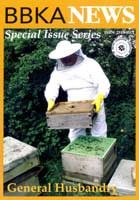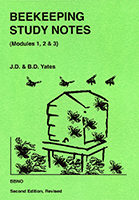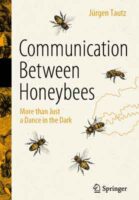
click image to zoom
How Do Bees Find Flowers? During the history of bee research, scientists have peered deep into the inner life of bee colonies and learned much about the behaviour of these insects. Above all, the bee waggle dance has become a famous and extensively discussed phenomenon. Nevertheless, recent insights reveal that while bees are social insects inside the hive they also…
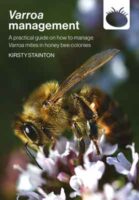
click image to zoom
This resource will provide you with everything you need to know for practical management of Varroa mites, it is the essential user-guide to Varroa treatments. In this guide you will learn: » Why Varroa mites are such a serious pest of honey bees. » How to spot signs that a honey bee colony is carrying a high mite burden. »…
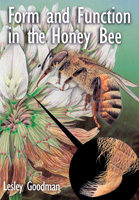
click image to zoom
Lovely book for serious students of honey bee biology. It has wonderful illustrations and is packed with information. If you are an entomology student or studying for BBKA exams then it is a worthwhile read and is considered a standard text. "The book focuses on detailed descriptions of bee body parts and how they work, but the title is woefully…
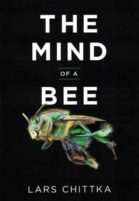
click image to zoom
Most of us are aware of the hive mind-the power of bees as an amazing collective. But do we know how uniquely intelligent bees are as individuals? In The Mind of a Bee, Lars Chittka draws from decades of research, including his own pioneering work, to argue that bees have remarkable cognitive abilities. He shows that they are profoundly smart,…
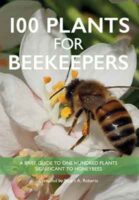
click image to zoom
Stuart Roberts is a Master Beekeeper, a member of the BBKA Examinations Board and a Trustee of the International Bee Research Association. The volume is a brief guide to one hundred plants significant to honeybees. Photographs are taken by the author during his work with apiaries in the Midland Counties. Each plant is described under the headings: Plant family; Common…
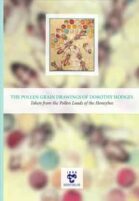
click image to zoom
The Pollen Loads of the Honeybee by Dorothy Hodges, an artist and experienced beekeeper, was first published 1952. It included drawings of pollen grains which will never be surpassed. The originals are preserved at the Royal Botanic Gardens, Kew. This booklet reproduces these drawings.
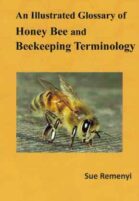
click image to zoom
An Illustrated Glossary of Honey Bee and Beekeeping Terminology is an invaluable reference book for all beekeepers. As with any activity there is always a significant amount of terminology and jargon to get to grips with and this glossary brings together the terminology a beekeeper needs. In addition, more advanced aspects of beekeeping such as the anatomy and biology of…
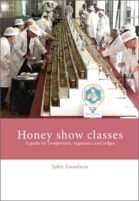
click image to zoom
This book has been written as a guide for everyone involved with honey shows, be it organising, exhibiting or judging. If on the day of the show the book has helped to achieve successful organisation, high standards of exhibiting, well-written and unambiguous honey show schedules, increased interest in honey shows, and more applicants for the BBKA Show Judge certificate, the…
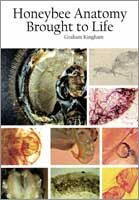
click image to zoom
This book uses photo essays to set out and display the anatomy, internal, external of the honeybee with over 350 detailed micrographs, together with slide images and drawings. Pests and other additional hive activities are also included. It will appeal to anyone interested in this fascinating insect and be particularly valuable to beekeepers studying for their British Beekeepers Association Module…
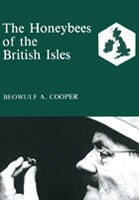
click image to zoom
A most important book on breeding, mating behaviour, selection and all aspects of the native British bee by a GIANT of beekeeping. This classic title, long out of print, has now been reissued by the Bee Improvement and Bee Breeders Association. Beowulf Cooper was one of the founding members of The Bee Improvement & Bee Breeders' Association (BIBBA) and responsible for…
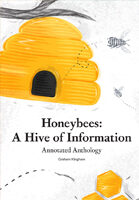
click image to zoom
• Do bees sleep? • What is in bee poo? • Do they have knees? • What about the ‘birds and the bees’? • Why do bees have a hump? Many of the honeybee's life mysteries are answered here .. Micrographs of pests in your honey and diseases in the hive .. Some contentious thoughts on the future management of…
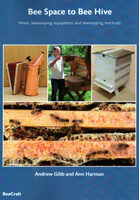
click image to zoom
"This book provides a fascinating insight into how beehives, beekeeping equipment and beekeeping methods have developed over the centuries. Lengthy observation enabled the discovery of the importance of bee space by Revd LL Langstroth, and after this discovery the ingenuity of many beekeepers has solved numerous problems associated with colony management. The evolution of ideas and creations by many well…
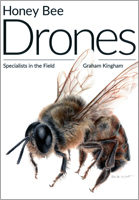
click image to zoom
This book concentrates only on the drone - the male honey bee. It provides details regarding the drone's internal and external anatomy, production and development, behaviour, role in the hive, genetics and more. Copiously illustrated, the book also discusses the latest research updates on drones. Graham Kingham is a retired mechanical quality engineer who keeps a few hives in Devon.…
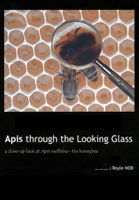
click image to zoom
This book is based on a lecture "Honeybee Anatomy" which was first given at the BBKA Spring Convention 2009 held in Stoneleigh. It provides a close up look at the external and internal structures of the honeybee. The majority of photos were taken using a digital camera mounted on a trinocular dissection microscope. Dissection of the bee to study the…
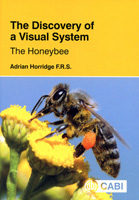
click image to zoom
In this hardback book, Adrian Horridge sets out the curious and contentious history of how the visual system of the honeybee came to be understood and how, in his view, the current accepted theory is completely wrong. Based on his own meticulous experimental work and historic analysis of past literature over many years, Horridge tells the story of a century…
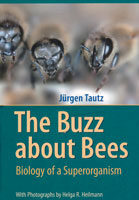
click image to zoom
With spectacularly beautiful colour photographs and an easily understandable text The Buzz about Bees tells the story of honeybees in a new perspective. Based on the latest data, notably from his own research group, Jürgen Tautz provides a wonderful insight into the realms of bees. “Whereas bee colonies were once seen as perfect societies of selfless workers and drones ruled…
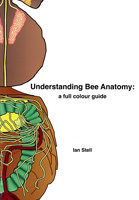
click image to zoom
Understanding Bee Anatomy aims to do two things, to explain the structure of this fascinating insect and, through stunning images, to reveal the intricate detail. Dr Stell has applied his knowledge of the human body in describing the honeybee, system by system. The book starts with a chapter on the developmental stages, showing the internal changes taking place from the…
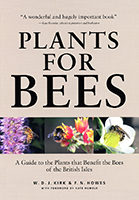
click image to zoom
A modern update by Kirk on the classic title by Howes. This is essential reading for gardeners and beekeepers. Very well illustrated, showing plants good for nectar and pollen and their attraction to social and solitary bees.
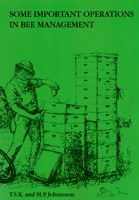
click image to zoom
T. S. K. Johansson
M. P. Johansson
This book starts where many books on beekeeping leave off. Each chapter is devoted to a subject of great importance to the beekeeper in getting the best return from his bees. It shows what beekeeping practice and scientific research have found out, all over the world, and gives meticulous directions to the beekeeper based on these findings.
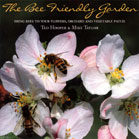
click image to zoom
This volume has colour photography alongside practical information on over 300 plants - and is the only A - Z of plants that list those specifically attractive to bees. The beekeeping facts and figures are supplied by Ted Hooper NDB while the plant information is given by Mike Taylor a consultant to the Royal Horticultural Society.
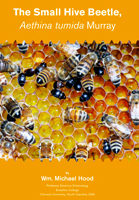
click image to zoom
The importance of the role played by honey bee pests in the world is becoming more recognised each year, not only because of attention given to the pest species, such as the varroa mite and small hive beetle, but also because of the increasing realisation that honey bees are extremely valuable to nature and humanity. The most up to date…
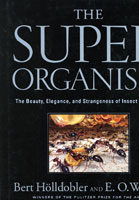
click image to zoom
Bert Hölldobler
Edward O. Wilson
Winner of the Pulitzer prize for the ants. This book as Sir David Attenborough said is a monumental and revelatory insight into one of the great wonders of the world, Social insects are reasserting themselves now as species of crucial importance to the environment. Holldobler and Wilson tells their story with unsurpassed insight and eloquence. The book is as thoroughly…
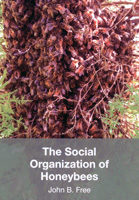
click image to zoom
Professor John B Free, a world authority on the subject covers the areas of colony organisation, activity, defence, forage collection, and reproduction in a very readable style. Recommended for all taking BBKA Exams. The honeybee is one of the most intensively studied insects and many of the findings have wide implications and have stimulated research on other organisms. Recent study of…
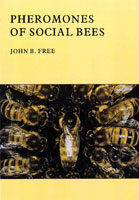
click image to zoom
Social insects employ many different pheromone systems which control almost all of their activities. Because of the economic importance and fascination of social bees their pheromones have been among the most studied and many exciting discoveries that have recently been made. This book is mostly concerned with pheromones of the honeybee. For convenience the chapter divisions are based on pheromone…
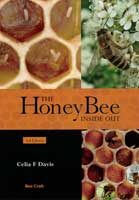
click image to zoom
This third edition has been completely revised and updated. This book is designed to present detailed information about the anatomy and physiology of the honey bee in a clear and concise format of the eight chapters covers an aspect of bee biology a d all are copiously illustrated. The author has drawn most of the diagrams from her own dissections,…
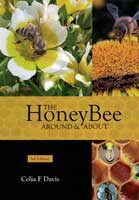
click image to zoom
This is the 3rd edition and a companion volume to Celia's first book The Honey Bee Inside Out which covered the anatomy and physiology of the honey bee. The Honey Bee Around and About begins by looking at the origin of honey bees and continues with a description of the different subspecies. Disease is often a neglected topic but it…
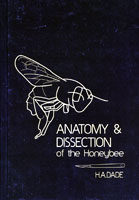
click image to zoom
This is a clear and practical guide to both the anatomy and dissection of the honeybee and is written in a style which makes the subject understandable by those without formal training in zoology or entomology. It is a classic of the beekeeping world.
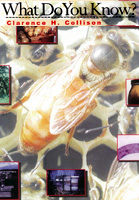
click image to zoom
This collection of Questions & Answers was chosen from the best of nearly two decades of testing the readers of Bee Culture. They cover every aspect of honey bee biology, colony management, pollination, and the products of the hive. There are over 400 pages and just over 2,550 questions, and answers, in this book. Now's your chance to test your…
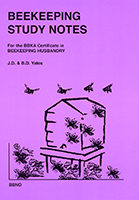
click image to zoom
John D. Yates
B. D. Yates
This text is essential for candidates. Every section of the syllabus of this examination is covered with notes to cover the most likely points that an examiner may reasonably be expected to raise while conducting the examination.
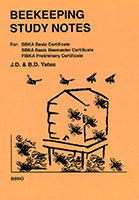
click image to zoom
John D. Yates
B. D. Yates
These notes are of use for beekeepers contemplating entering the BBKA Basic Certificate, SBKA Basic Beemasters Certificate and the FIBKA Preliminary Certificate. Each part of the syllabus for the exams are addressed and the notes, should cover everything that the Examiner is likely to ask the Candidate
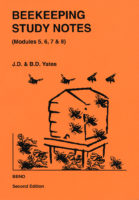
click image to zoom
John D. Yates
B. D. Yates
These notes cover Modules 5 - 8 of the BBKA Examinations. John & Dawn Yates have provided within one cover, all the details required in the syllabus of each module for examination purposes, in order to minimise the cost of purchasing the many books required to seek out the necessary information. Hopefully everything that is likely to appear in an…
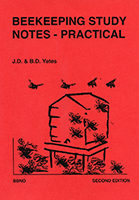
click image to zoom
John D. Yates
B. D. Yates
This handbook is helpful for those taking the Practical Examination of the BBKA. It includes introductory advice on the setting and procedure of the Examination and deals with both the practical and oral requirements of the syllabus.
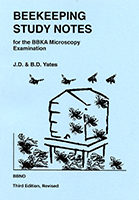
click image to zoom
John D. Yates
B. D. Yates
This is the only single volume that covers all aspects of the syllabus for this examination. This Third Edition published in 2014 has a contents list which is based upon the existing syllabus. As such it is a very necessary text for all those interested in sitting the examination and will also prove helpful for all interested in microscopy.
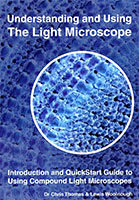
click image to zoom
Chris Thomas
Lewis Woolnough
This book explains the key microscope components and set-up. There are numerous illustrations, photographs and links to nine instructional videos that accompany the book.
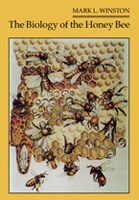
click image to zoom
One of the great books of the last 50 years. An update on the works of Ribbans and Free, this title should be on the bookshelf of all beekeepers. A very readable volume. From ancient cave paintings of honey bee nests to modern science’s richly diversified investigation of honey bee biology and its applications, the human imagination has long been…
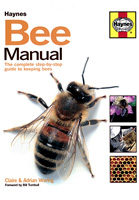
click image to zoom
Adrian Waring
Claire Waring
The Bee Manual provides a complete and easy to-follow reference to the intriguing world of the honey bee and the addictive craft of beekeeping. Aimed at the novice but also containing plenty to interest the experienced beekeeper, the Bee Manual presents no-nonsense advice, facts and step-by-step sequences, as well as plenty of relevant photographs and diagrams. Find out how to…
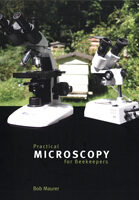
click image to zoom
"Essential reading for any beekeeper exploring the world of microscopy. Clear, concise and practical." - Celia Davis BSc NDB, Author: The Honey Bee Inside Out & The Honey Bee Around and About. "An invaluable step-by-step overview of the microscopy tasks candidates may be required to perform or discuss in the British Beekeepers' Association assessments." John Hendrie - Past Secretary, British…
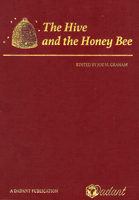
click image to zoom
This book represents the continuation of a beekeeping textbook publishing tradition that began in 1853 with the Rev. L.L. Langstroth, the father of American Beekeeping. In 1881 Langstroth entrusted the continuation of his book to his trusted friend, Charles Dadant and his son, C.P. Dadant. Since that time the Dadant family has kept that trust, while modernising and expanding the…









































